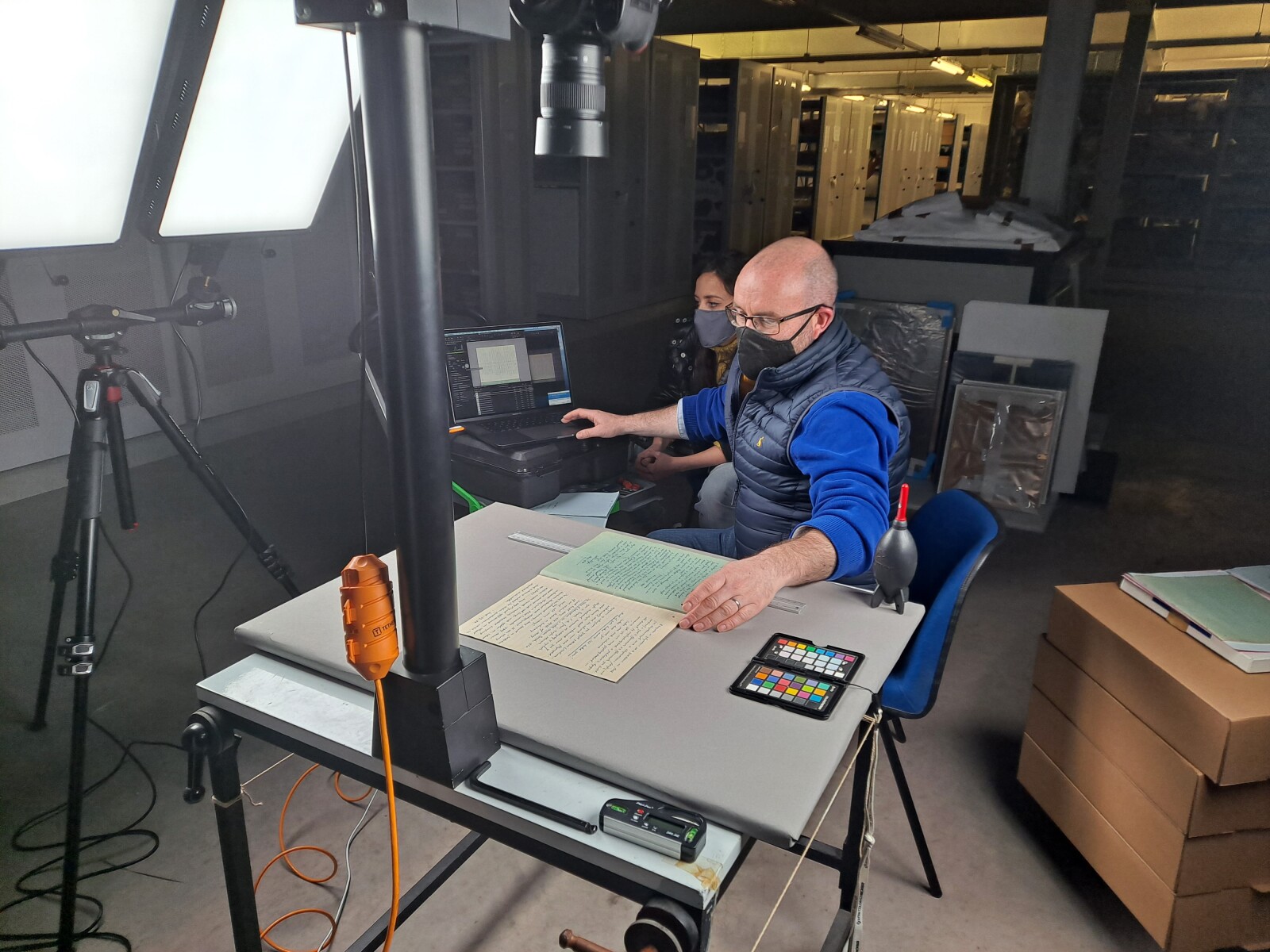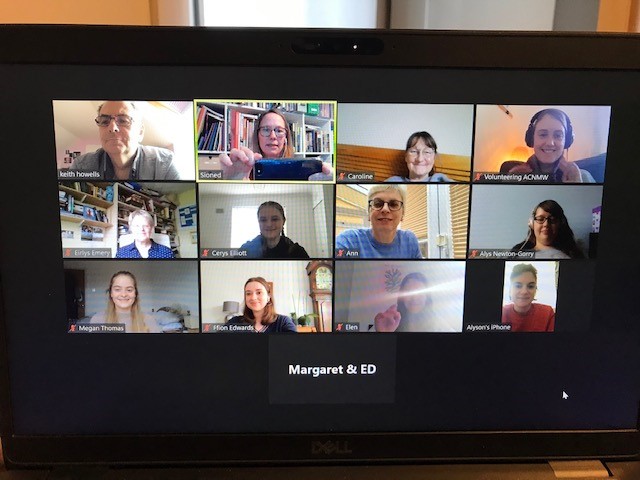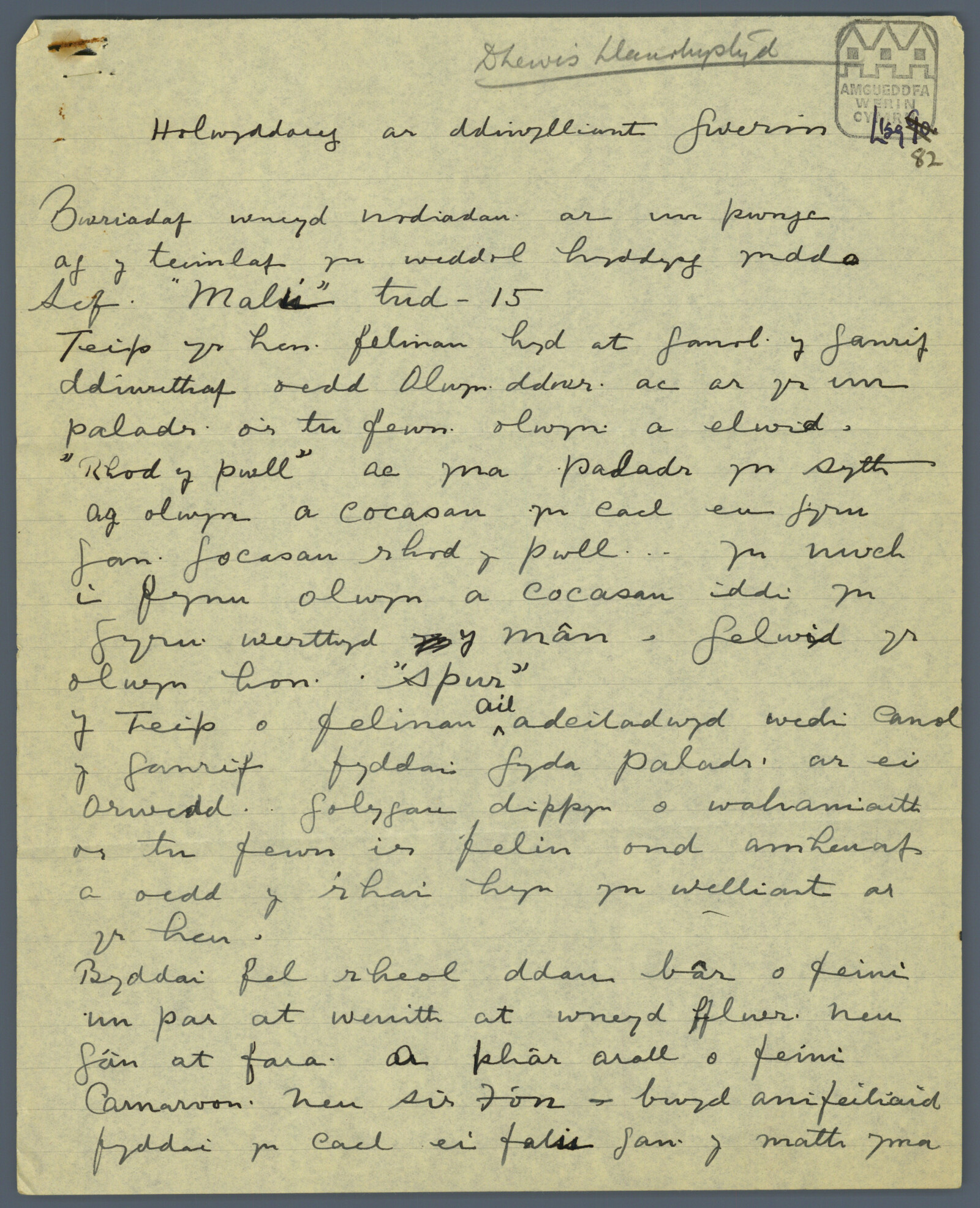Collecting Covid: revisiting collecting methods of the past
, 1 September 2021
In March 2020, museums across the world started to capture stories and collect objects relating to the Covid-19 pandemic. At Amgueddfa Cymru-National Museum Wales, we launched a digital questionnaire in May 2020 as a first step towards creating a national Covid collection to be archived at St Fagans National Museum of History. This method of collecting information through questionnaires is rooted in the Museum’s history, dating back to 1937.
We soon realised that the continuity in collecting methods of the past also offered an opportunity to revisit some of the early questionnaire responses and to inspire new collecting initiatives in post-Covid Wales. To enable this work, we applied for funding to the Museums Association Esmée Fairbairn Collections Fund which allowed us to start on a 12-month project to digitise the historic questionnaires and experiment with new models of collecting through engaging with communities.
We began the project from September 2020, at a time when Covid restrictions had started to ease. The first task was to digitise the hundreds of pages of responses from the historic questionnaires and answer books.
The earliest questionnaire was published by the Museum in December 1937 and sent out to 493 respondents across Wales. This may have been inspired by the Mass Observation project of 1937 recording the everyday lives of people across Britain. Launched in a decade largely defined by economic hardship and unemployment, the ‘Questionnaire of Folk Culture’ asked participants to provide information about a variety of subjects such as the domestic, public and cultural life of their local area. It also encouraged people to send photographs and drawings and to become regular informants to assist with developing a collection which formed the basis for the Welsh Folk Museum at St Fagans, established in 1948. After that. questionnaires and ‘answer books’ were regularly used by the Museum as a form of capturing information on a range of subjects, up until the 1980s.
After the first batch of questionnaires had been digitised, we made a call-out to volunteer organizations in various parts of Wales, inviting people to transcribe the handwritten responses. By this time (December 2020), Wales was in yet another lockdown and it seemed a good time as any for the Museum to offer e-volunteering roles as part of its programme for the first time. We recruited eleven volunteers, all Welsh-speakers or leaners as the material was mostly in Welsh. The digitised images were sent directly to each volunteer to be transcribed and where possible, the volunteers received material of interest to their locality. We met over Zoom and Teams to discuss the work and to share experiences. To date, the volunteers have contributed at least 180 hours of their time and we are extremely grateful to them for their input. The transcribed material will eventually be seen alongside the digitised questionnaire responses through the museum’s online collections database.
The next stage of the project involved creating a new Covid questionnaire for 2021. As Wales had been through a fire-break, lockdown and mass-vaccination programme we felt that there was a lot of information we still needed to capture that wasn’t included in the 2020 questionnaire. This time though we wanted to consult with our community partners first to help us with co-producing the questions so that we could be more inclusive. With the help of our partners, our aim is to try and reach those communities that may have not taken part in the 2020 questionnaire and who have been particularly affected by the pandemic.
With the launch of the 2021 Collecting Covid questionnaire in June, we are now trying to get as many people to take part so that everyone’s voices are captured and recorded as part of a ‘national memory’ for Wales. We also hope to engage with local history societies from some of the areas that responded to the Museum’s original call to action, to invite them to research some of the local stories. What we hope to achieve through this project is a blueprint for future collecting and engagement by learning from the collecting methods of the past enabling agile, rapid and responsive collecting for the future.



